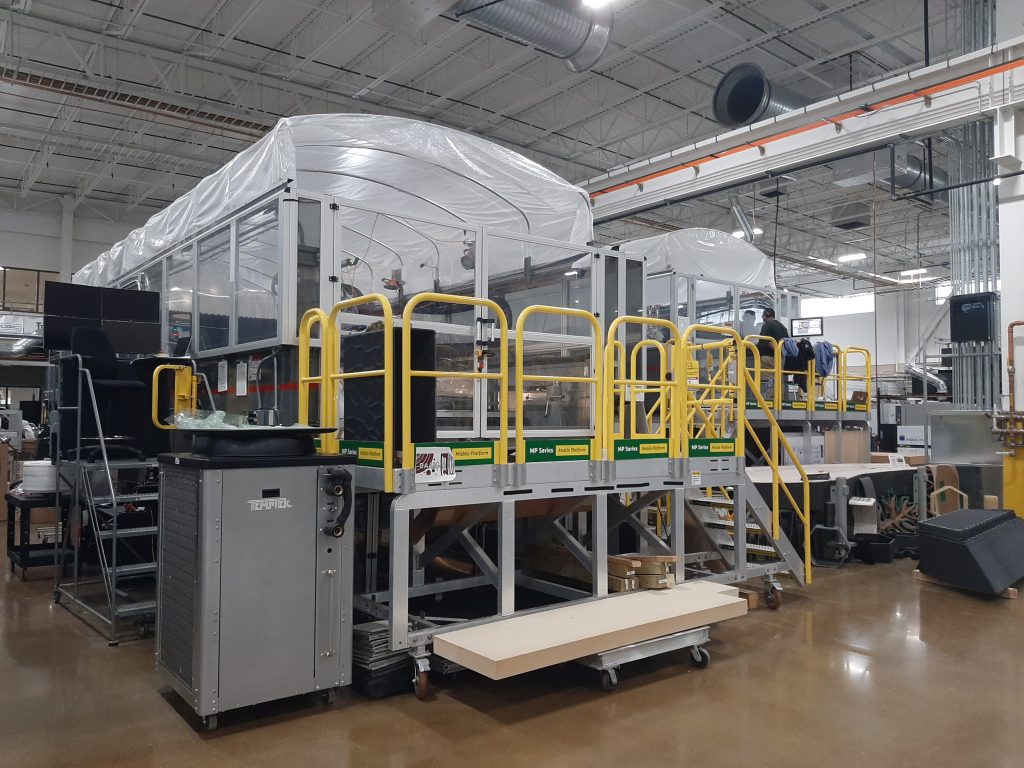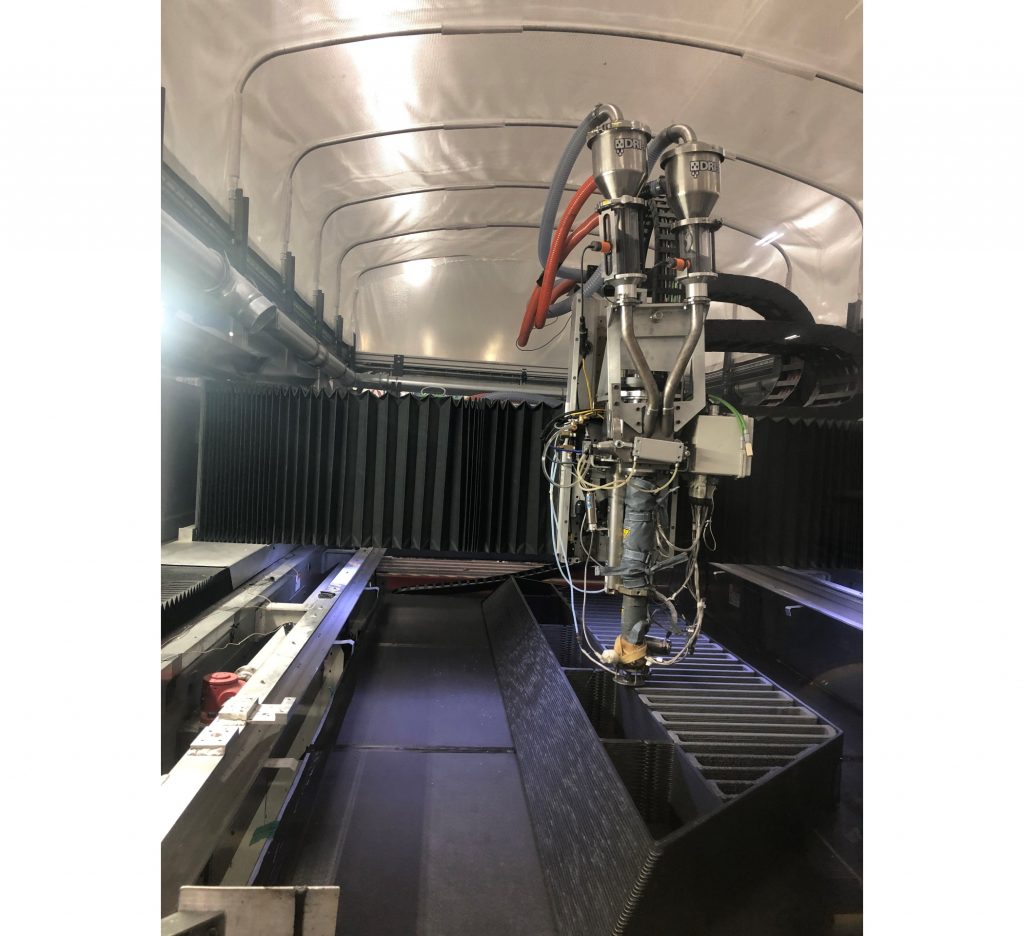As part of its ongoing partnership with Oak Ridge National Laboratory (ORNL), Cincinnati Incorporated (CI), a developer of machine tools and 3D printing technology, has 3D printed what it believes to be one of the largest monolithic multi-material parts to date.
Using a modified version of CI’s Big Area Additive Manufacturing (BAAM) system, the partners were able to demonstrate that large part 3D printing was feasible using only recycled composite materials. For the past few years, CI has been working with ORNL to continuously develop BAAM, with the latest improvement including a new extruder design that enables a dual material feed.
Alex Riestenberg, CI’s Additive Manufacturing Product Manager, explains, “The objective of this particular study was to demonstrate the printing of a multi-material composite tool including transitions, exceeding 10 feet in length, and containing recycled material, all while being printed without manual intervention.”

The benefits of multi-material 3D printing
The part chosen for the demonstration project was originally a concrete casting tool used to produce commercial window panels for high-rise buildings in New York. The 3D printed version of the mold weighed around 181kg, measuring over 3.3m in length. The total print time came in at seven hours and the two composite materials used for the part were 100% recycled CF/ABS and standard CF/ABS with an ABS Syntactic foam.
By using a multi-material setup, the companies found that they could incorporate conductive circuits into their part, enabling smart structures. The use of two materials also allowed for lightweight core structures, easier support removal, localized reinforcement, and more aesthetic freedom by way of multiple colors.
Vidya Kishore, a Materials Scientist at ORNL, adds, “Studies have shown that by using multiple materials within a structure, new mechanical responses and multi-functionality can be achieved. This includes lightweight structures with tailored mechanical properties, soft and rigid segments within a part, and impact-resistant structures.”

Large part production with BAAM
Key to the success of the project was the large part production capabilities of the BAAM system. Developed in conjunction with ORNL, the 3D printer was initially used to research large-format, single material parts. With the latest upgrades, BAAM now features a large dual-material thermoplastic extrusion system, which enabled the partners to print with two different materials at once using just one extruder.
“The source of material fed into the extruder is switched on the fly at specific times during a print by sliding two material ports back and forth over the infeed to the extruder,” explains Riestenberg. “The system also includes a material blender outside the frame of the machine that can blend specific amounts of different materials and fillers on the fly for specific custom material grades.”
By combining a material feed switching mechanism with a material blender, BAAM users are given the ability to print with several composite material combinations over the course of a single build. According to CI, the latest iteration of BAAM is reportedly the only commercial 3D printer with this capability, setting it apart from other multi-material platforms.

The completion of projects like CI’s 181kg 3D printed casting mold go to show just how far ultra-large-format 3D printing has come. Earlier this year, manufacturing system provider Ingersoll Machine Tools partnered with aviation company Bell to 3D print a 22 foot-long vacuum trim tool, which is used for the production of helicopter rotor blades. The part required 520kg of ABS with a 20% chopped carbon fiber fill, and took around 75 hours to print from start to finish.
Elsewhere, in defense, ASTRO America was recently selected to coordinate a new U.S. Army initiative focused on developing an ultra-large-format metal 3D printer for the production of ground vehicles. The system, built as part of the Jointless Hull Project, will be used to 3D print single-piece armored vehicle hulls (chassis) for tanks and Humvees.
Subscribe to the 3D Printing Industry newsletter for the latest news in additive manufacturing. You can also stay connected by following us on Twitter and liking us on Facebook.
Looking for a career in additive manufacturing? Visit 3D Printing Jobs for a selection of roles in the industry.
Featured image shows the large-format BAAM 3D printer. Photo via Cincinnati Incorporated.


